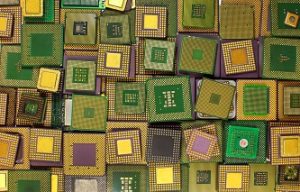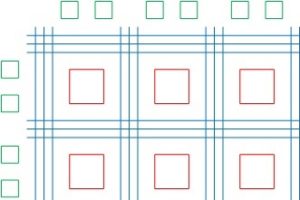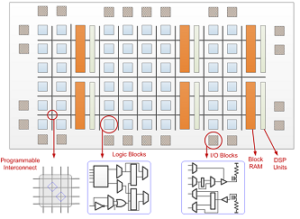Category Archives: FPGA Design
09/08/2019, hardwarebee

The use of predictive technology in the field of electronics is becoming ever so prevalent as it helps identify any flaws in the FPGA design early in the process as well as gives the user the opportunity to visualize their design in real time, with all of its functionality and
Read More
06/08/2019, hardwarebee

Metastability in FPGAs is a state that digital electronics systems can find themselves stuck in for a period of time. Normally, in a circuit employing the use of digital logic, the input signal coming into the circuit and being interpreted needs to either fall as a 1 or a 0.
Read More
06/08/2019, hardwarebee

Today, the process of FPGA synthesis plays a very integral and crucial role in the creation of FPGAs — ensuring that they work optimally and with high efficiency. FPGA synthesis, as suggested by the name, is a process of converting high level FPGA logic design into gates.
Read More
18/06/2019, hardwarebee

Xilinx, Inc. (NASDAQ: XLNX), the leader in adaptive and intelligent computing, today announced that it has shipped Versal™ AI Core series and Versal Prime series devices to multiple tier one customers through the company’s early access program. Versal is the industry’s first adaptive compute acceleration platform (ACAP), a revolutionary new
Read More
11/06/2019, hardwarebee

France, Gournay sur Marne — June 11th 2019 – Logic Design Solutions (LDS) extends its portfolio of NVME-HOST IPs with the first NVME-HOST IP on POLARFIRE FPGA which enables designers to address specific market in embedded recording domain.
Higher performance
MVMe disks can manage several PCIe links, which allows them
Read More
08/06/2019, hardwarebee

Power-On Reset is an electronic circuit that generates a reset pulse, which sets the entire design to an initial and well-known state after the power supply is detected. In Vivado the Xilinx’s Processor System Reset LogiCORE IP provides this functionality.
If a synchronous reset is executed at system
Read More
16/05/2019, hardwarebee

The world of HDL (Hardware Description Language) is divided between Verilog vs VHDL. Some believe that Verilog is best suited for ASIC and FPGA development and some believe that VHDL is a much more superior programing language. This debate has been carrying on since the past few decades. And it
Read More
01/05/2019, hardwarebee

This interview was held with Sven Meier, CEO of NetTimeLogic GmbH.
Tell me a bit about your background? How did you first get started with NetTimeLogic?
I worked for many different companies where FPGAs, time synchronization and network redundancy were always key technologies. I have a
Read More
28/04/2019, hardwarebee

Xilinx, Inc. (NASDAQ: XLNX), the leader in adaptive and intelligent computing, announced today that it has entered into a definitive agreement to acquire Solarflare Communications, Inc., an Irvine, Calif.-based privately-held company. Solarflare is a leading provider of high-performance, low latency networking solutions for customers spanning FinTech to cloud computing. The
Read More
17/04/2019, hardwarebee

Intel Corporation today announced the acquisition of Omnitek, a leading provider of optimized video and vision FPGA IP solutions. Omnitek’s technology enables customized high-performance vision and artificial intelligence (AI) inferencing capabilities on FPGAs for customers across a range of end markets. Omnitek’s IP addresses demanding application requirements in areas such
Read More











